When I brought home the shell of a bed that I would eventually transform into Emma’s big girl bed, one thought popped into my mind: “Crap, this is going to take a lot of work.”
Okay, I guess it was two thoughts, because the second one was that I needed to make sure that it had not been painted at some point with lead based paint. I’ve never actually worked on a furniture piece that contained lead paint, but this one was such a mess that I had no idea what could be underneath.
I could tell that the top layer was latex because of the way that it peeled, but I was unsure about the original factory coat of paint. From what I understand, I am the 3rd or 4th owner of this bed, so there’s no telling how old it is.
Awww, don’t worry sweetie. Lindsay’s going to fix you all up.
Before I started stripping off the years of paint, I wanted to make sure that there wasn’t any lead. If it was originally painted before 1978 (when the ban began in the US for lead in household paints), it could very well contain lead. Releasing lead into the air through refinishing projects is really dangerous. It can effect the central nervous system, kidneys and cardiovascular systems in healthy adults, and the repercussions for children can be even worse. It’s honestly not something that you want to mess around with.
So, I bought a lead check kit at Home Depot. It was $10 and includes 2 tests that are easy to use.
If you’ve never used one before, you don’t have to be nervous at all. You snap the swab in two locations that are marked on the swab holder (like you snap glow-in-the-dark necklaces) and shake and squeeze it until the contained yellow liquid starts coming out.
Then, you rub the swab on the piece for 30 seconds.
If the liquid turns red or pink, then that means that there is lead present. If it stays yellow, then there is no lead. Here’s what my swab looked like after the 30 seconds.
No lead! Yay! If there was, I would have just properly disposed of this piece and found another bed. A $35 bed (that’s now AMAZING, by the way) isn’t worth our health.
My friend Brittany at Pretty Handy Girl tested some items a few years ago, and she did find lead in one of her pieces. If you want to see how red the test turns, check out her video here.
I’m going to be mean and make you wait a little bit longer to see the bed. I promise it will be worth it when you see what’s coming here all next week!
In the meantime, tell me about your lead paint checking kit experiences. Have you used a test kit before? Did you get the dreaded red swab?
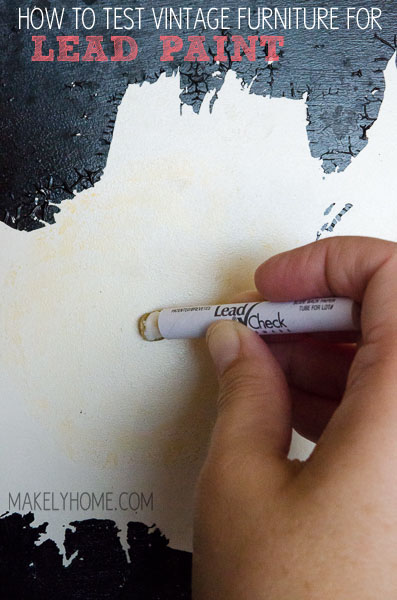
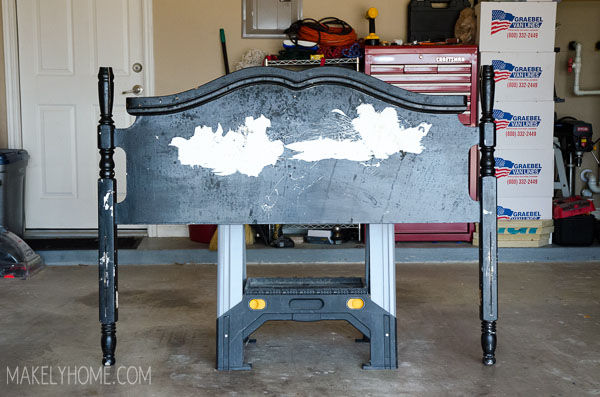
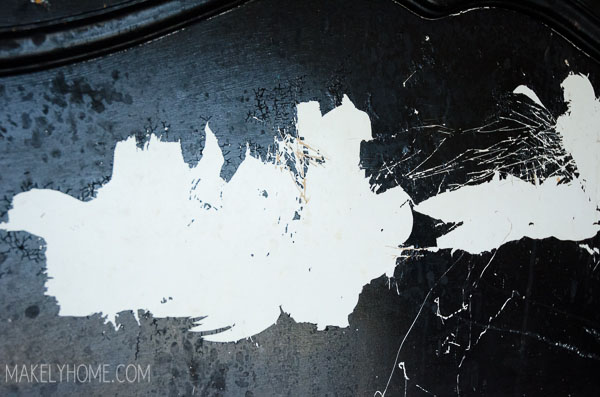
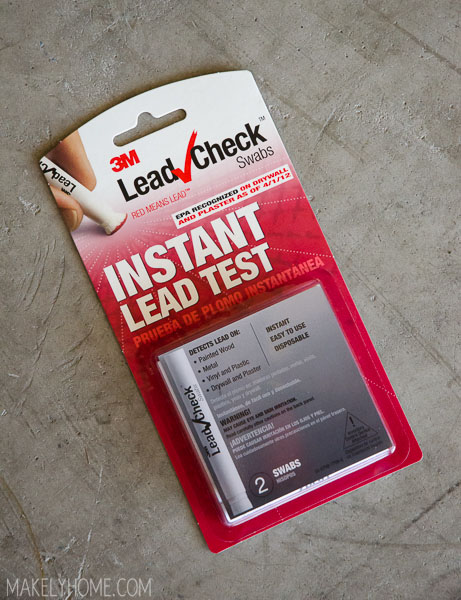
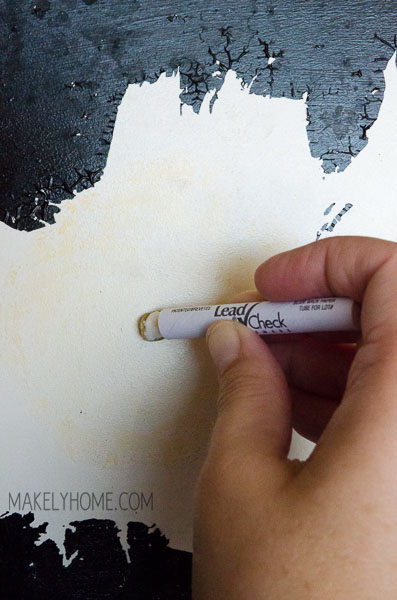

I need to start doing this. I don’t even want to know how many pieces that I worked on actually had lead paint on them.
Yikes! Yeah, I’ve had this thought, too. I’d rather not know. 😉
Great article, a lot of people don’t realize the dangers of lead or that you should even test for it.
How many layers will the test work on? I just recently bought 4 old doors that have at least 4 or 5 layers of paint.
Just FYI lead check swabs will check the surface layer only. A XRF reading or sending a paint chip to a lab is the only true way to see if it is lead based paint.
Additionally “lead based paint” is a regulatory definition not a statement, even modern paint typically have some lead content.
Lead check swabs can be very misleading.